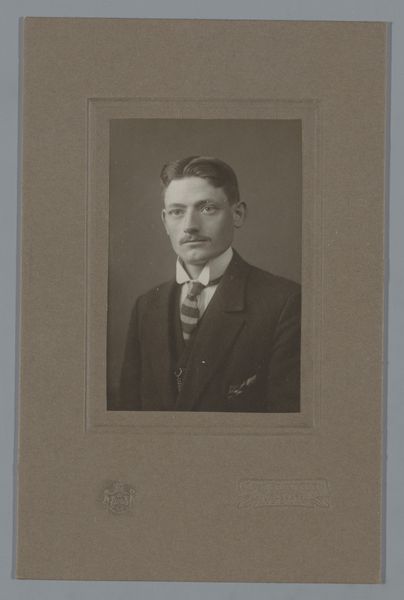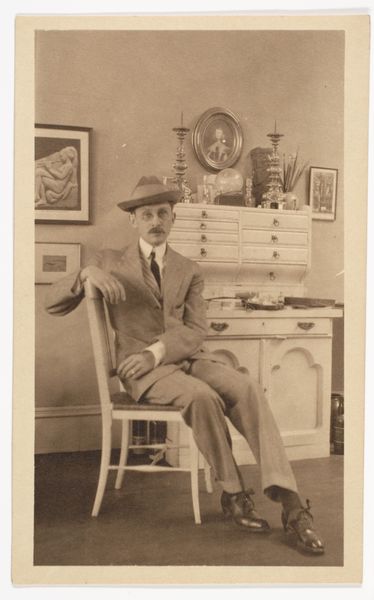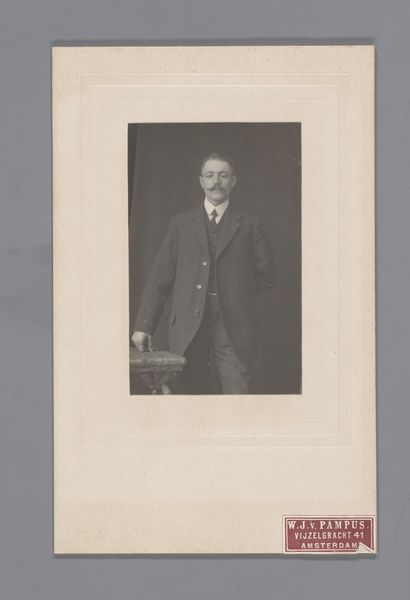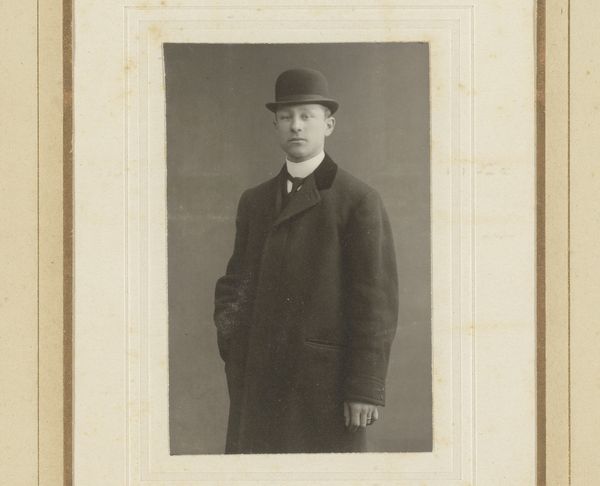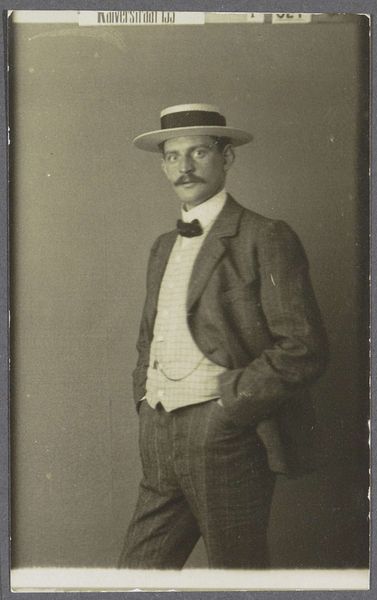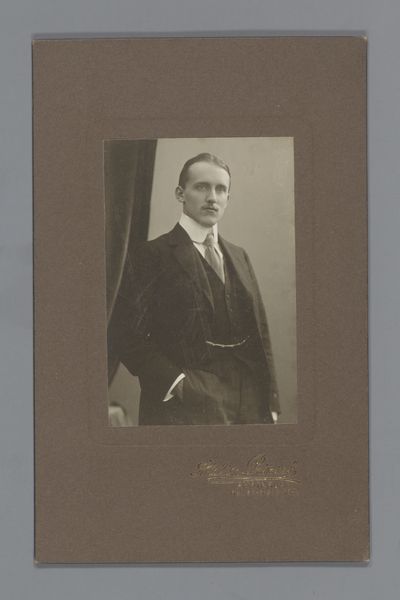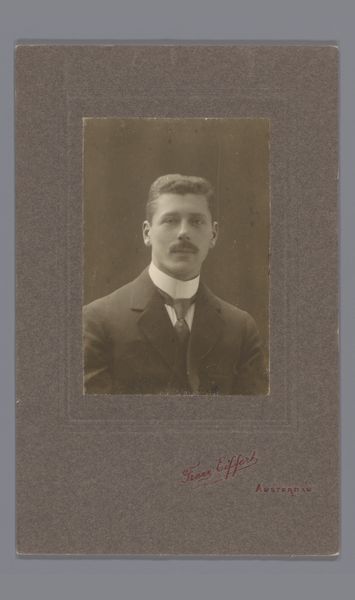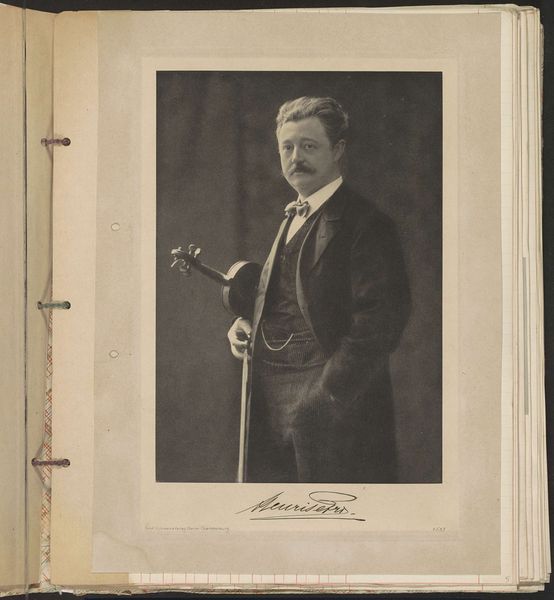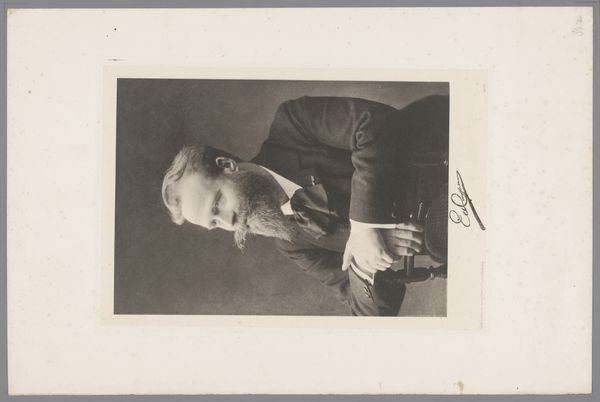
photography, gelatin-silver-print
#
portrait
#
print photography
#
photography
#
gelatin-silver-print
#
modernism
Dimensions: height 230 mm, width 171 mm, height 407 mm, width 306 mm
Copyright: Rijks Museum: Open Domain
Editor: This gelatin silver print, "Portret van de fotograaf Jacob Merkelbach" by Bernard Eilers, likely created sometime between 1910 and 1930, has such a classic, formal feeling. There's something about the hat and the subdued tones that speaks to a specific era. What can you tell me about it? Curator: Well, it’s fascinating to consider this portrait within the context of early 20th-century Dutch society. Photography at this time was rapidly evolving as a tool for not only documentation but also artistic expression, even activism. Merkelbach himself, as a photographer, was participating in the shaping of visual culture and, more specifically, representation. How does this image speak to you in terms of the photographer being the subject, in addition to taking them? Editor: That's an interesting point! Seeing a photographer *as* the subject shifts my understanding. The gaze becomes more layered, self-aware. Curator: Precisely. Think about the power dynamics inherent in portraiture, especially during this era. Whose image was captured, how, and by whom became highly politicized acts. The photograph, whether conscious or not, becomes a visual dialogue about power, status, and identity at a turning point for representation. This period was right before so many things would come to change - how does knowing that change anything about the image for you? Editor: Thinking about photography's democratizing effect in contrast to its role in potentially reinforcing social hierarchies gives the piece a certain tension that I hadn't noticed initially. Curator: Exactly! And perhaps Eilers, through this portrait, is subtly commenting on these dynamics, or perhaps reifying them. Food for thought, right? Editor: Absolutely. Thanks, I'm walking away with much more nuanced perspectives than I walked in with. Curator: Likewise. Thinking about who holds the camera, and what stories their images tell, always expands our understanding of art's intersectional influence.
Comments
No comments
Be the first to comment and join the conversation on the ultimate creative platform.
